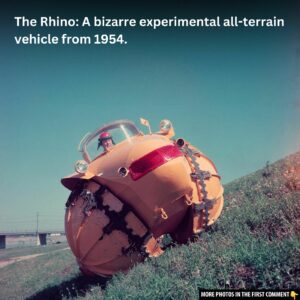In the early 1990s, the automotive world was rife with bold, forward-thinking designs as manufacturers sought to prepare for a future shaped by changing environmental concerns and urban growth. The Plymouth Voyager III, introduced in 1990, was a daring leap into this new frontier—a revolutionary concept that blended a microcar and van into one single package. Though it never made it to production, the Voyager III captured the imagination of the public and showcased Chrysler’s ambition to craft a vehicle for a more sustainable, efficient future. This concept vehicle, with its innovative design and futuristic aspirations, was meant to address two conflicting market demands: the growing need for smaller, greener cars and the insatiable demand for family-friendly, spacious vans.
The Dual Purpose Design
The Plymouth Voyager III wasn’t just another concept car—it was a visionary attempt to merge the best of both worlds. At first glance, the design might have seemed like an odd hybrid, but it was a product of necessity. With the rising awareness of climate issues and congestion in urban areas, the Voyager III sought to be the solution that could solve the contradiction between the increasing popularity of vans and the growing need for more eco-friendly transportation.
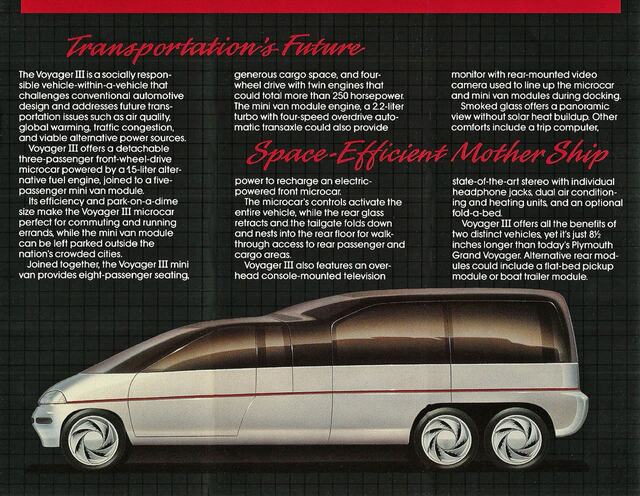
The Voyager III was essentially a two-in-one vehicle. It consisted of a compact, microcar front module, ideal for city commuting, which could be detached from the rear van module that provided the space and functionality needed for family outings or long trips. Chrysler envisioned a modular approach that would not only make urban commuting more efficient but also offer families the versatility of a van without the need to drive a large vehicle every day. The concept was simple: one car, two solutions.
Video
Watch this video to explore the Plymouth Voyager III Concept showcased at the 1990 Chicago Auto Show!
How the Plymouth Voyager III Functioned
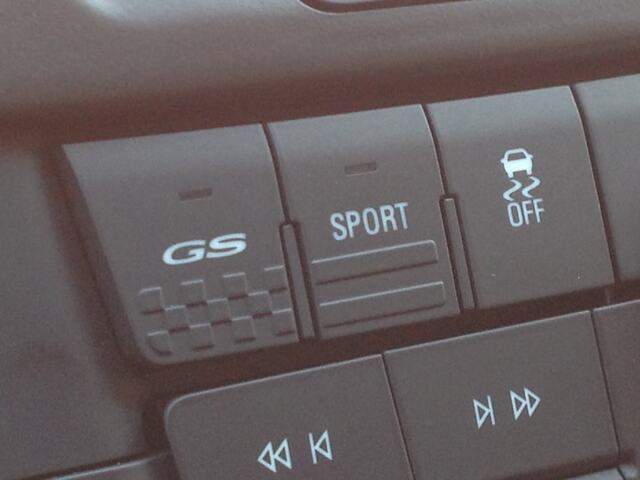
So, how did this ambitious concept actually work? The front of the Voyager III was a microcar powered by a small 1.5-liter engine, capable of carrying three passengers, including the driver. This part of the vehicle was designed for daily city use—compact, fuel-efficient, and ideally suited for tight urban spaces. To make the design even more forward-thinking, the microcar could be powered by alternative fuels, possibly propane, in a nod to environmental concerns.
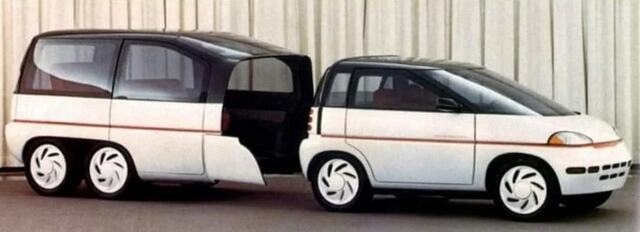
The rear module of the vehicle was a full-fledged van, equipped with a second 2.2-liter turbocharged engine. It was here where the real genius of the Voyager III’s design came into play: the vehicle could be driven with just the front microcar engine, the rear van engine, or, for maximum power, both engines could be activated simultaneously. When both engines were engaged, the vehicle boasted a total of 250 horsepower and was capable of all-wheel-drive. This provided the flexibility of using the vehicle as a compact commuter car or a more powerful van for family trips.
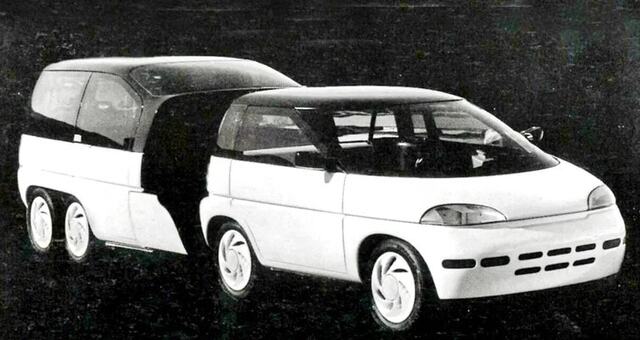
The separation between the two modules was crucial in enabling this hybrid functionality. When not needed, the rear van could be left at home, eliminating the need for extra space on city roads and making driving more efficient. For longer journeys or when extra space was needed, the two parts could be mated together to form a fully functional family vehicle.
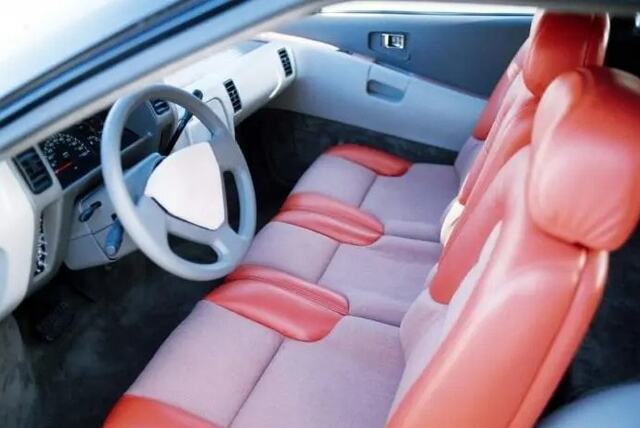
Chrysler’s Vision for the Future of Urban Transportation
The Plymouth Voyager III was not just about the convenience of having a two-in-one vehicle. It was also about solving the urban transportation challenges of the time. With cities becoming more crowded and pollution levels on the rise, Chrysler recognized the growing demand for smaller, more fuel-efficient vehicles. At the same time, the American love affair with the minivan and large vehicles was reaching new heights, making it clear that a solution was needed that could meet both needs.
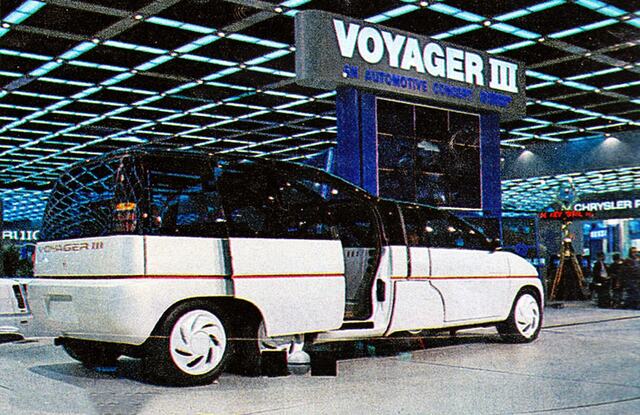
The Voyager III’s modular design was more than just a gimmick—it was a reflection of the changing times. As Bob Lutz, the then-president of Chrysler, explained, many drivers were using full-size vans for their daily commutes, wasting fuel and taking up valuable space in already-congested urban areas. The Voyager III aimed to solve that by providing an alternative: leave the large van at home for city driving and only bring it along when necessary. This would alleviate urban congestion, reduce pollution, and offer drivers a more efficient way of getting around. It was an eco-friendly solution to a very real problem—one that’s just as relevant today.
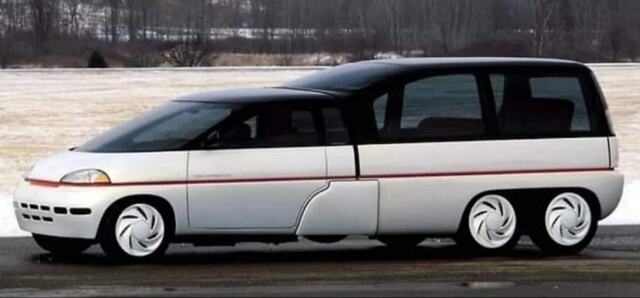
The Voyager III’s Marketability and Consumer Appeal
Despite its unique design and environmental aspirations, the Plymouth Voyager III was not without its flaws. The vehicle was meant to be a future-proof solution, with potential for future modifications—like swapping the van module for a flat-bed pickup or even a boat trailer. Yet, its appeal was limited by the high cost of production and the impracticality of a two-part vehicle. While the concept sounded great on paper, consumers would have had to pay for two vehicles but only get the full functionality of the Voyager III when both modules were combined.
Another major issue was the challenge of leaving the rear van module unattended. When the microcar was used on its own, the van module would be left exposed, vulnerable to theft or damage, and it wasn’t designed to withstand the elements on its own. This left potential buyers questioning the practicality of a car that required constant parking in a safe, controlled environment.
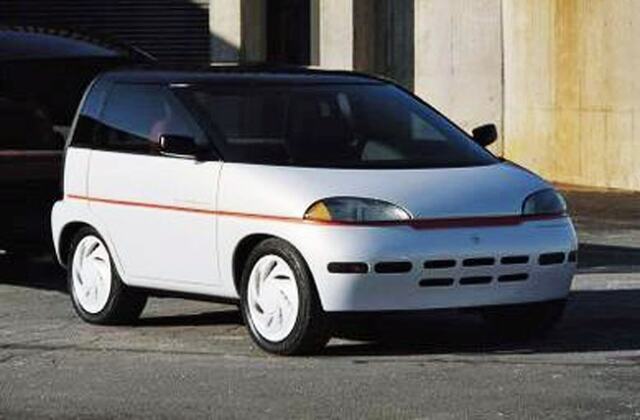
Despite these limitations, the Voyager III was equipped with innovative features that appealed to its futuristic sensibilities. The vehicle featured a rear camera and an overhead console-mounted TV monitor to help the driver park the microcar into the van module. It also included a trip computer, dual heating and air-conditioning units, and a state-of-the-art stereo system with individual headphone jacks, making it feel like the high-tech vehicle of the future.
Legacy and Influence of the Plymouth Voyager III
Though the Plymouth Voyager III never made it to production, its legacy still holds relevance today. The concept vehicle captured the imagination of a generation that was beginning to reckon with the need for more sustainable, eco-friendly cars. It served as a glimpse into the future of transportation—a future where vehicles could be modular and adaptable to the varying needs of their owners. The Voyager III was ahead of its time in many ways, combining versatility with a vision for the future that sought to answer pressing global concerns.
The vehicle’s ambitious design may have been a bit too far-reaching for the market at the time, but the idea of a modular vehicle still resonates today. With the rise of electric vehicles, self-driving cars, and even modular vehicles in the current market, the Voyager III stands as an early example of how automakers have been thinking about future solutions for transportation.

Video
Watch this video to see the restoration of a rare 1963 AC Greyhound, brought back to perfection after 53 years of abandonment!
Conclusion: The Vehicle That Could Have Been
The Plymouth Voyager III represents an automotive dream that never quite materialized. Its revolutionary design, eco-friendly aspirations, and innovative features captured the imagination of a generation, but it was ultimately too costly and impractical for mass production. Nonetheless, it stands as a testament to the bold thinking and visionary ideas that have shaped the future of the automotive industry. The Voyager III reminds us that sometimes, even the most innovative concepts can’t break through, but their legacy can still influence future designs.
In the end, the Plymouth Voyager III will always be remembered as a glimpse into a future that never was—a creative exploration of how transportation could evolve to meet the needs of an increasingly urbanized and environmentally conscious world.



